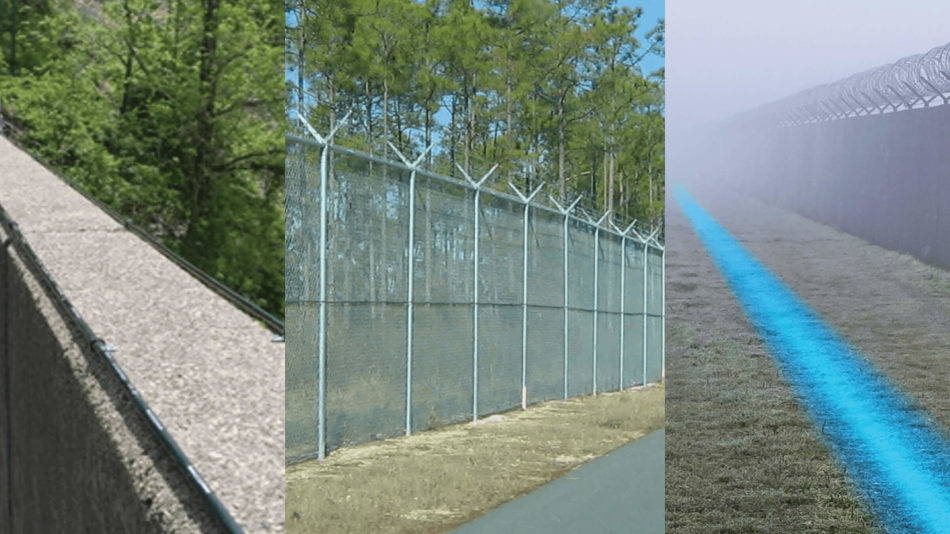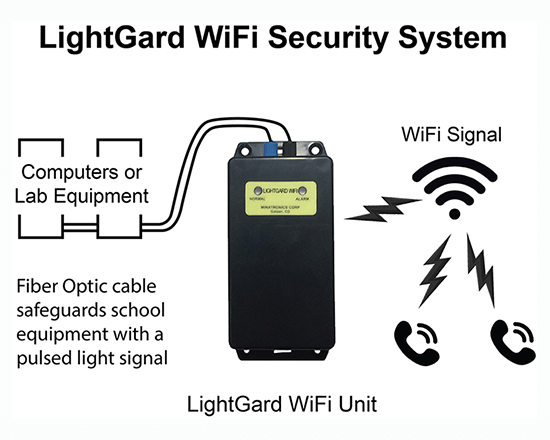Why Fiber Optic Protection Systems Are the Future of Security
The shift to fiber optic protection systems notes a substantial innovation in the realm of protection, driven by their extraordinary information transmission capacities and durability to exterior disturbances. These systems not only promote faster and much more trustworthy communication however additionally present a cost-effective service with minimized upkeep demands. As the landscape of safety and security develops alongside emerging technologies such as AI and IoT, the possibility for optical fiber to boost and redefine security infrastructures ends up being progressively apparent. However, the ramifications of these innovations elevate crucial inquiries concerning the future of safety and security procedures and their effectiveness in an ever-changing atmosphere.
Advantages of Fiber Optic Systems
Among the main advantages of fiber optic systems is their remarkable data transfer capability, which promotes the transmission of large volumes of data over cross countries without significant loss. This particular is particularly useful for safety applications that call for the continual tracking and transfer of high-def video feeds, sensing unit information, and other vital information. Optical fiber can suit the expanding needs of modern safety and security systems, guaranteeing that data remains intact and dependable.
In addition, fiber optic cable televisions are less at risk to electromagnetic interference, which can be a substantial problem in settings with different digital tools. This resistance enhances the integrity of the information being transmitted, therefore minimizing the threat of data violations or system failures. Fiber optic systems are naturally much more safe than traditional copper wires, as touching right into a fiber optic line without detection is exceptionally tough.
The resilience of fiber optic cords additionally contributes to their charm. They are resistant to environmental variables such as moisture and temperature level changes, reducing upkeep expenses and enhancing system durability. Overall, these advantages placement fiber optic systems as a robust and efficient choice for contemporary security infrastructures, ensuring dependable and secure information transmission.
Enhanced Data Transmission Rate

The capability to send substantial quantities of information promptly assists in the smooth assimilation of high-definition video feeds and progressed analytics. Protection systems can currently process and analyze information in real-time, improving action times and situational understanding. In addition, fiber optic links sustain longer transmission distances without deterioration of signal quality, making them excellent for expansive security networks.
The enhanced rate of fiber optic systems not only improves the performance of safety and security procedures however additionally minimizes latency. This is specifically important in important situations where prompt decision-making can prevent security breaches or alleviate potential hazards. As organizations continue to prioritize safety and security and effectiveness, the demand for rapid and trustworthy why not try here data transmission will most certainly solidify fiber optic systems as a cornerstone of modern protection infrastructure.
Resistance to Disturbance
Fiber optic protection systems constantly show extraordinary resistance to electro-magnetic disturbance, an essential benefit in atmospheres prone to digital sound. Unlike standard copper cables, which can be adversely influenced by electromagnetic fields, radio frequency disturbance, and various other forms of electric disruption, fiber optic wires make use of light to transfer information. This inherent property makes certain that the signals continue to be clear and unchanged, no matter bordering digital activity.
Making use of glass or plastic fibers in fiber optic modern technology produces an obstacle versus interference, enabling for trustworthy information transmission even in tough circumstances such as industrial facilities, urban areas with high digital web traffic, or areas near radio towers. This characteristic substantially reduces the chance of signal destruction or loss, making fiber optic systems specifically ideal for protection applications where stability and accuracy of information are extremely important.
Additionally, this resistance to interference enhances the general efficiency and integrity of security systems, guaranteeing that tracking and alert systems operate perfectly. In a globe where safety is progressively intimidated by sophisticated innovations, the strength of fiber optic systems stands out as an essential attribute, reinforcing their condition as a vital element of modern safety and security infrastructure.
Cost-Effectiveness Over Time
Considerable price financial savings can be attained gradually with the implementation of fiber optic safety systems. While the preliminary financial investment might seem greater contrasted to traditional copper-based systems, the long-lasting monetary benefits come to be evident through reduced functional and maintenance prices (fiber security). Fiber optic cords are naturally more resilient and much less prone to environmental aspects, which converts to decrease substitute and fixing expenses over their lifespan
Moreover, fiber optic systems need less power to operate, which better decreases power expenses. Boosted data transmission capacities enable less repeaters and amplifiers, lessening equipment financial investment and streamlining setup procedures. The scalability of these systems likewise adds to cost-effectiveness, as organizations can broaden their protection infrastructure without incurring substantial additional expenditures.
Another aspect to consider is the boosted performance in monitoring and feedback capabilities that optical fiber give. Enhanced real-time data transmission can bring about quicker incident reaction times, possibly mitigating losses and responsibilities connected with safety and security violations. In amount, the long-term advantages of fiber optic safety systems not just warrant the initial expenditure however likewise place them as a monetarily prudent choice for companies seeking robust security options.

Future Technologies in Protection
Advancing innovations are established to transform safety systems, incorporating artificial intelligence (AI) and maker understanding to enhance risk discovery and feedback capabilities. These developments will enable protection systems to assess vast amounts of data in real-time, determining patterns and abnormalities that suggest possible hazards. This aggressive approach will enable faster try this web-site decision-making and much more efficient occurrence actions.
In addition, the unification of the Net of Points (IoT) is leading the means for interconnected protection tools, supplying thorough surveillance and surveillance. Smart sensing units can pass on details concerning ecological modifications, click for info while automated notifies can inform safety and security personnel instantly of suspicious activities.
Moreover, the advancement of biometric modern technologies will certainly even more reinforce security mechanisms. Face acknowledgment, fingerprint scanning, and retina identification are coming to be a lot more advanced, offering layers of authentication that are hard to bypass.
Conclusion
To conclude, fiber optic protection systems stand for a significant improvement in defense innovation, using unequaled data transmission rate, resistance to electro-magnetic interference, and lasting cost-effectiveness. As the demand for sophisticated safety services proceeds to grow, the integration of optical fiber with emerging modern technologies such as AI, IoT, and biometrics will better improve protection facilities (fiber security). The mix of these advancements will make sure a more safe and secure and responsive setting, solidifying optical fiber as a cornerstone of future protection systems
Comments on “A Step-by-Step Guide to Fiber Optics Infrastructure for Security Installations”